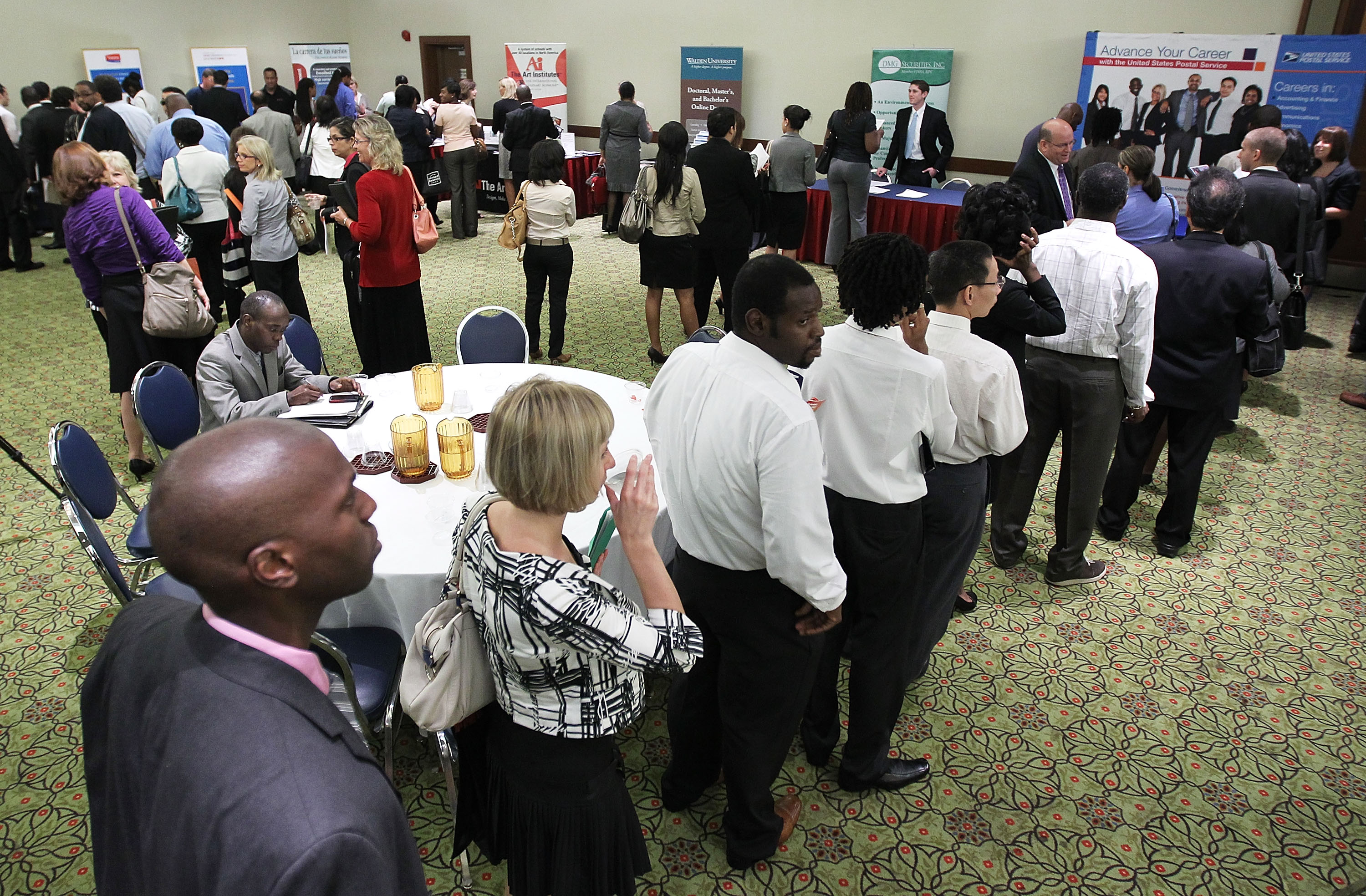Employers added 215,000 jobs in March, the Labor Department said Friday, underscoring that the U.S. labor market continues to shrug off economic weakness both domestically and abroad.
The unemployment rate, which is calculated from a different survey, rose to 5% from 4.9%, as a surge of Americans back into the labor force — which includes people working and looking for jobs — more than offset a healthy rise in employment.
Economists surveyed by Bloomberg expected 205,000 new jobs, according to their median forecast.
Businesses added 195,000 jobs, led by retail, construction and health care. Federal, state and local governments added 20,000.
Employment gains for January and February were revised down by a trivial 1,000.
Average hourly wages rose 7 cents to $25.43 and are up 2.3% the past year, more than reversing an unexpected dip in February and possibly indicating that lackluster earnings gains of slightly more than 2% throughout the recovery are picking up. If the trend continues, it could signal that inflation will accelerate and help prod the Federal Reserve to raise its benchmark interest rate again after lifting it in December for the first time in nine years.
Possibly working against that trend was a rise in the labor force participation rate — the share of the population working or looking for jobs. It picked up from 62.9% to 63%, the highest level since March 2014, and it's up from 62.4% since September after trending down for years as Baby Boomers have retired. Millions of Americans on the sidelines since the recession have streamed back into an improving labor market, including retirees, people in school and on disability, and discouraged workers who stopped looking for jobs.
If it persists, that shift could keep the unemployment rate higher for longer and temper wage increases by expanding the pool of available job candidates. That could allow the Fed to raise interest rates more slowly.
The report’s modest negatives included an average workweek that was unchanged at 34.4 hours, below the recent trend. Employers who trim the hours of workers may be unlikely to step up hiring in coming months.
The number of part-time workers who prefer full-time jobs jumped by 135,000, pushing up a broader measure of unemployment that includes that group, the jobless and discouraged workers who have given up looking to 9.8% from 9.7%.
Last month, retailers added 48,000 jobs while health care added 44,000; leisure and hospitality, 40,000; construction, 37,000; and professional and business services, 33,000.
Manufacturers cut 29,000 jobs, revealing the sector is still hobbled by a weak economy overseas and the oil industry’s downturn. Mining and logging companies, which include oil producers, chopped 12,000 jobs.
Jason Schenker, president of Prestige Economics, called the report “solid,” but said, “You’re losing really high-paying jobs” in manufacturing and energy and adding lower paying positions in retail and restaurants.
Manufacturing may be poised for a turnaround. The Institute for Supply Management said Friday its index of factory activity registered expansion for the first time in six months on a surge in new orders.
Overall, the labor market has been resilient, steadily turning in average gains of more than 200,000 jobs a month despite an economy that grew a sluggish 1.4% at an annual rate late last year and is likely to expand by less than 1% in the current quarter.
Healthy consumer spending and the housing recovery have propped up hiring, more than offsetting the slump in manufacturing. But the government reported this week that even consumption has been subdued this year, raising questions about whether the labor market will sputter as well. In a note to clients, Barclays said Friday’s solid report probably heralds a pickup in consumption in coming months, as newly employed workers ramp up purchases.
Federal Reserve Chair Janet Yellen signaled this week that the central bank is likely to stand pat on interest rates this month, regardless of Friday’s jobs totals. Although stocks have bounced back from a selloff early in the year, Yellen said she’s concerned about China's slowdown and its potential to further roil markets.

![March jobs numbers surpass expectations [video : 82517758]](http://videos.usatoday.net/Brightcove2/29906170001/2016/04/29906170001_4826903607001_4826816207001-vs.jpg?pubId=29906170001)

